5 Real Survival Adventures That Deserve Their Own Movies

First, the following people were afraid. They were petrified. Kept thinking they could never live without you by their side. But then they spent so many nights thinking how you did them wrong, and they grew strong. And they learned how to get along.
One Civilian Plane Was Allowed To Fly On 9/11 ... To Save A Florida Man Bitten By A Snake
If you watched Netflix's Tiger King, you know about Mario Tabraue, the dealer in big cats who was also a cocaine magnate sentenced in 1989 to 100 years in prison. Tabraue was released slightly before his prison term was up. By 2001, he ran another exotic animal business called Zoological Imports 2000 Inc., and to take care of the snakes, he brought in professional Florida man Lawrence Van Sertima. Lawrence, being a snake handler, was always mentally prepared for eventually getting bitten. Unfortunately for him, one fated bite happened to come on September 11.
He was cleaning a cage belonging to a taipan, who, presumably distressed by the events in New York, lashed out and rattled its cage. Lawrence reached in and got nipped on the finger. That sounds mild, except for the small fact that the taipan might be the deadliest snake in the world. Lawrence didn't respond by sucking venom out of the wound (that just infects the wound more) or by cutting the wound open (that's the last thing you want when venom's thinning your blood and making you bleed out). He did try to "milk" the venom out of the cut, but before he made any progress, he lost consciousness.
Like we said, taipan venom thins your blood, and that left Lawrence in bad shape. Blood was pouring out of holes all over his body, even seeping through places where there didn't seem to be any hole, the sites of old wounds. Miami has a special rescue squad called Venom 1 for precisely this sort of typical Florida emergency, and they did all they could, injecting Lawrence with every antivenin they had. But they really needed specific taipan antivenin, and the closest taipan antivenin was all the way in San Diego. They couldn't fly the stuff in because the government had shut down airspace nationwide. So they did the one thing they could.

That's right: They flew the stuff in.
We know, we just said they couldn't do that. The only planes allowed to fly in the immediate aftermath of the terrorist attack were military reconnaissance jets, that one weird plane with the power to set off all the nukes, the Money Plane of course, and other such absolute essentials. But they got special permission, and so a vial of antivenin flew across the country like in some brightest timeline Snakes On A Plane mirror universe. Lawrence recovered, and he went on to just file this experience as one of the four venomous bites he received over the course of his career. And considering that he sometimes handles 800 snakes a day, four bites total isn't so bad.
Rescuers Judged It Impossible To Save The Rest Of The Donner Party. Then One Guy Saved Them All.
We best remember the Donner Party for their difficult decision to adopt a diet that one might euphemistically call "humanitarian." But this group of pioneers who journeyed from Missouri toward California before getting stuck in the mountains didn't all get eaten. Half survived, thanks to a series of rescue efforts, the first of which was headed by James Reed, patriarch of one of the party's big families. The party actually banished James after he stabbed a guy to death (James was defending his wife from getting beaten), but that didn't stop him from trying to get a rescue going after he returned to civilization. Only problem was, James' rescue crew had to turn back before ever quite finding the Donner Party, so that's the last we'll say about James Reed.
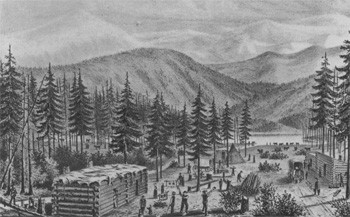
Others also made off from the Donner camp and sought rescue. This group of 17 trekked on snowshoes, and before they did find help, things got really bad. Like those they left behind, these travelers turned to cannibalism, except they went a little more extreme than what the others did.
The rest of the Donner Party ate corpses but never murdered each other for food. Team Snowshoe ate corpses (sorting them so no one had to eat their own relative, since that would be gross), and they also killed and ate two party members who refused to eat corpses -- it was either eat or be eaten. These two were Natives from the Miwok tribe, men named Luis and Salvador. Just days later, the surviving snowshoers were taken in and fed ... by a group of Miwoks they stumbled on.
One other showshoer, William Eddy, had also refused to eat his comrades. He made it to Sacramento Valley, he got a rescue party going, and they made it to the Donners and took 23 back with them. These included James Reed's wife Margret, and on their way back, they met another rescue party James was leading (we lied about being done with James), and so those two got to reunite. Later, Eddy tried raising yet another rescue party, and this time, he had to offer everyone plenty of money to join him. Everyone except one guy named John Stark, who figured he'd come along for free.
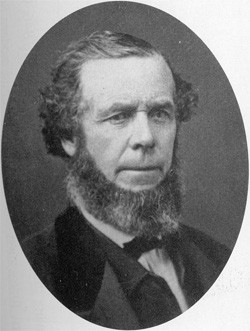
Wait, not that kind! The other kind.
They reached one of the handful of sites where the Donner survivors remained, a place whimsically named "Starved Camp." Eddy himself continued toward another spot where his children were, leaving the others to decide how many at Starved Camp they could take with them. Two children was all they could manage, was the consensus. But John Stark, that crazy bastard, knew nothing of this "consensus" bullshit, so he piled two additional children on his back then took off through the snow. Then he came back and piled more kids on his back, then made yet another trip, sometimes taking three at a time.
He managed to save all of them, nine in total. He laughed as he carried them to keep their spirits up, saying he could almost take them all in one go since they were so light (due to, um, starvation). It's nice that some people in the Donner Party got a happy ending. Not Eddy, who reached his destination and discovered someone had eaten all his children, but some people did anyway.
When Nazis Sunk His Boat, A Sailor Lasted On A Raft For 133 Days
Poon Lim was probably the single least likely person to survive the sinking of the SS Benlomond. He was a second steward, meaning he was more or less expendable. He was also Chinese, which didn't do a lot for his status aboard this British ship -- when he first joined the Merchant Navy, he suffered so much prejudice and regular beatings that he actually quit, only returning when World War II began. Yet when a U-boat torpedoed the ship, Lim somehow was the only sailor not to die. He did catch sight of a half dozen other crewmembers on a raft, but no one ever heard anything more from them, so unless they're still alive on an island somewhere, yeah, Lim was the only survivor.
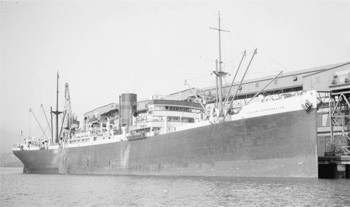
Lim managed to get on a life raft himself, which was good, since he couldn't swim. He immediately tied his wrist to the raft in case he fell off. He had no real way of steering, so he pretty much just had to drift and hope a ship stumbled on him. Till then, he'd have to stay alive, and the raft's small supply of water and biscuits wouldn't last long. For more water, he rigged up a system to collect rain. For food, he used the biscuits as bait to catch fish, then used fish parts to catch bigger fish. It worked great for a while, till a storm one day washed just about all his supplies away.
Newly fueled by rage, Lim leveled up and started hunting birds by just grabbing them and ripping them apart. Fresh bird blood turned out to be delicious, and though he couldn't cook the meat, he used salt water to try to process the flesh into jerky. Problem: The bloody bird bits attracted sharks. Solution: Lim pulled a shark out of the water, wrestled it into submission, then feasted on it. He was especially happy to dry out and eat the fins, which were a Chinese delicacy.
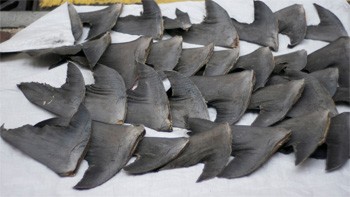
He stopped counting the days as more and more time passed, and he moved on to counting months by changes in the Moon. A couple times, he spotted ships, but none picked him up -- his theory was they mistook him for a Japanese spy setting a trap. One time, he spotted a U-boat, which also didn't pick him up. Finally, 133 days into his journey, his raft came to the coast of Brazil. He had drifted 750 miles. He did not look like a man at death's door, and the locals who collected him insisted that he quickly hop back on the raft and pose for a picture.
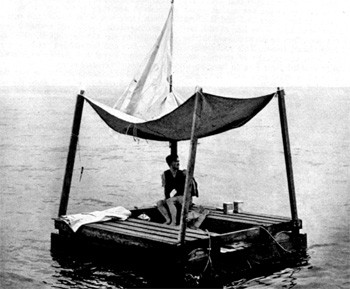
It's not visible in the photo, but the fishermen who found him and helped him make his way to a city reported that Lin's ordeal had caused his genitals to increase enormously in size. This does not mean that we can in good conscience recommend that you now embark on a rafting journey solely to ... whoops, too late, half of you are already gone.
An Antarctic Crew Were Stranded On Ice For Over A Year
Antarctica is dangerous, especially if you're British. Every English schoolchild learns about Robert Scott's grand expedition to find the South Pole, which somewhat ended when they reached it and found Norway beat them to it, and then truly ended when every single one of them died trying to return. Ernest Shackleton accompanied Scott during one of his earlier Antarctic trips, and then in 1914, he led a British expedition of his own, figuring, "Wow. If things had gone slightly differently, I could have died there. That sounds good; let me try for that right away."
The plan was to cross the entire continent, from the South American side to the Australian side. But this trip paused in January 1915 when their ship, the Endurance, still some distance from land, became totally trapped in the ice. They tried to smash through the ice by hand and get free, which worked for a bit:
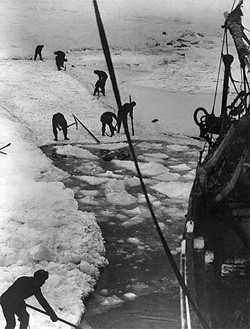
... but the water quickly refroze. So they figured they'd just chill in the ship for a while and wait for that ice to melt again. They had plenty of supplies. Really, the biggest inconvenience was maybe cleaning up all the shit produced by the 70 dogs they'd brought with them, but they got around this by building new kennels in the ice. They called these "dogloos."
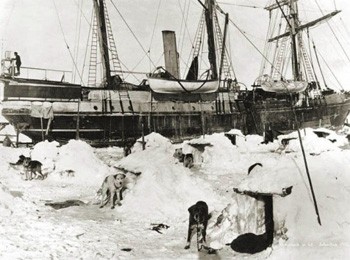
Eight months passed. They didn't remain put exactly -- the ice they were on moved, taking them over 600 miles, farther and farther from where they'd planned to land. Then in September, the ice finally started to melt ... leading to giant loose masses of ice crushing the ship and splitting it apart. The explorers grabbed what they could from the Endurance and abandoned it, and things from this were point were suddenly a lot more desperate.
Short on food (even after butchering all the dogs) and with no real shelter, they had to spend the next eight months marching north toward the most promising nearby bit of solid land. The ice they walked on finally gave way totally, so they put the lifeboats they'd been dragging into the water and rowed the rest of the way to Elephant Island.

Sorry, we have just been informed that was wrong; it is known for elephant seals. And delicious penguins.
On Elephant Island, they turned two of their boats into a building that they dubbed "the Snuggery," because no amount of hardship would stop them from coming up with more adorable names. With the final boat, Shackleton set off farther north toward South Georgia, an island that actually had people on it, people who could rescue them all.
The others hung back and stayed put. Among their many other problems over the next weeks, one steward got frostbit so bad they had to cut off all his toes by candlelight. This guy wasn't even supposed to be there: Shackleton had rejected him for the voyage, so he'd stowed away in a locker till the Endurance was at sea, a decision he probably now deeply regretted. Shackleton's right-hand man Frank Wild was the leader of Elephant Island, and he ordered that no one should build long-term storage for meat from their hunts. Wild believed in the power of positive thinking, and if they acted like rescue would come soon, rescue would come soon dammit.

Well, four months passed without rescue coming.
But then rescue did come. Shackleton had crossed the 750 miles to South Georgia in his 22-foot boat, arranged three separate rescue voyages, and after each of them in turn had to turn back after hitting too much ice, he arranged a fourth that made it all the way. The sailors boarded the rescue ship on August 30, 1916. It had been a year and a half since the Endurance froze in ice.
Every man who'd left on the Endurance survived and made it back home. That's amazing. Normally, even when a family of five goes to visit the Grand Canyon, they count on losing at least one or two members by trip's end.
Someone At Jonestown Was Shot Five Times, Got Covered By Ants, But Survived
Right before Congressman Leo Ryan traveled to Jonestown in 1978, his legal counsel Jackie Speier drafted a new will. A dangerous cult leader ran the place -- this was, in fact, the reason they were staging a rescue visit there -- so she figured one or both of them may well not get out of there alive. Ryan laughed off her worries. No sitting member of Congress had ever been murdered, he pointed out. What he said was true, and it's almost true even today. His own death is the single exception.
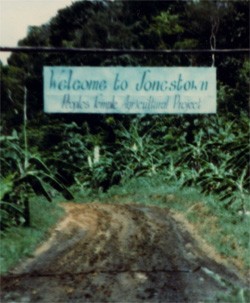
Ryan and Speier went to Jonestown, and they managed to leave there and head to the airstrip. They escorted a handful of scared cultists, who wanted to be taken out of Guyana. But along came a van full of armed cultists, who offered an alternate method by which the defectors could be "taken out." Speier dove under the plane and played dead.
This saved her from being shot more than 40 times, like what happened to Ryan. But it didn't stop a passing cultist from shooting her at least a handful of times, just in case. Bone poked out of the skin of her right arm. Her right thigh was ripped open. One bullet went through her back, and bullets in her hip and chest went in so deep that even when she ended up getting medical attention, doctors left those in, and they're still in her today.
She spent 22 hours on the airstrip, during which she never lost consciousness. Then natives moved her into the jungle, trying to help, but they couldn't do much, and they were terrified of the cultists coming back and shooting them next. Plenty of sounds of shooting were coming from the Jonestown compound (the massacre was not, like some believe, a case of everyone choosing peaceful suicide via fruit punch). The natives plopped Speier on a giant ant hill, and ants swarmed over her face and body. In truth, the ants may not have increased the chance of her dying, but they might have increased the chance of her wanting to.
She spent two months in the hospital then returned to the US, where she immediately learned that the end of that weekend was the deadline to run for Ryan's vacant congressional seat. So Speier filed the papers and ran. She didn't win -- not then, anyway. But she ran for the same seat decades later, in 2008, and she did win. She went on holding that office until ... uh, until today, and then some. She's still a member of Congress right now.

How has someone not drafted her for a presidential run, based solely on her surviving a massacre that killed 900 people? This is the biggest missed opportunity since the first American to orbit the Earth became senator and we didn't then make him president -- first of America, then of the world.
Follow Ryan Menezes on Twitter for more stuff no one should see.
Top image: AllenMcC./Wiki Commons